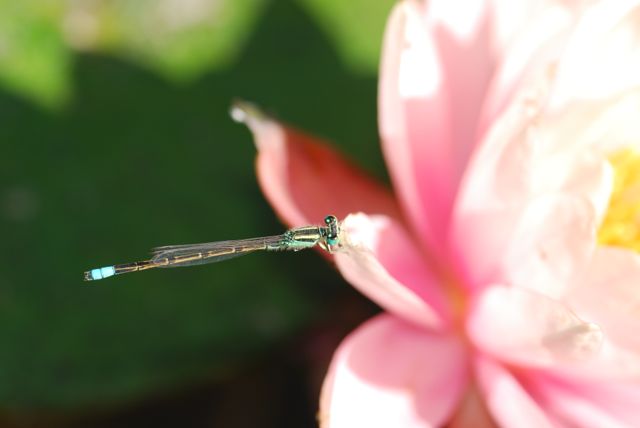
It’s pollinator week, so let’s celebrate by investigating some insects that visit flowers and carry pollen.

Of course, most of us recognize that honey bees are important pollinators.

Other types of bees, some large and some small, also gather and move pollen. What other kinds of insects are pollinators?

What about wasps?

Do you think beetles can carry pollen?

This damselfly is on a flower. Is it a pollinator?

Although it looks like a bee, do you think this fly might be a pollinator?

What about butterflies? Can they be important pollinators?

You rarely see moths during the day. Can moths be pollinators?
If you answered yes to all the insects above except the damselfly, then you know your pollinators. The dragonflies and damselflies may rest on flowers, but they catch insects for food and don’t carry enough pollen from flower to flower to be considered pollinators.
From Arizona? You might want to check out the National Pollinator Week celebration at Tohono Chul in Tucson. It is going to be from 10 a.m. to 4 p.m. on Saturday June 22, 2013. The first 50 families attending the event will get to make their own native bee habitat to take home. There will be special showings of Wings of Life, a new film from Disneynature narrated by Academy Award winner Meryl Streep, and a talk by bee specialist Dr. Stephen Buchmann of Pollinator Partnership. Sounds like a great way to spend the day!
If you don’t live in Arizona, you can find your state on the clickable map at www.pollinator.org to locate events near you.
We’d love to hear what you do to celebrate pollinator week!
__________________________________________________________________________________________________________
Wings of Life is also available on DVD/Bluray.
 For example, what is this bee doing?
For example, what is this bee doing? Can you see better in this photograph?
Can you see better in this photograph?















